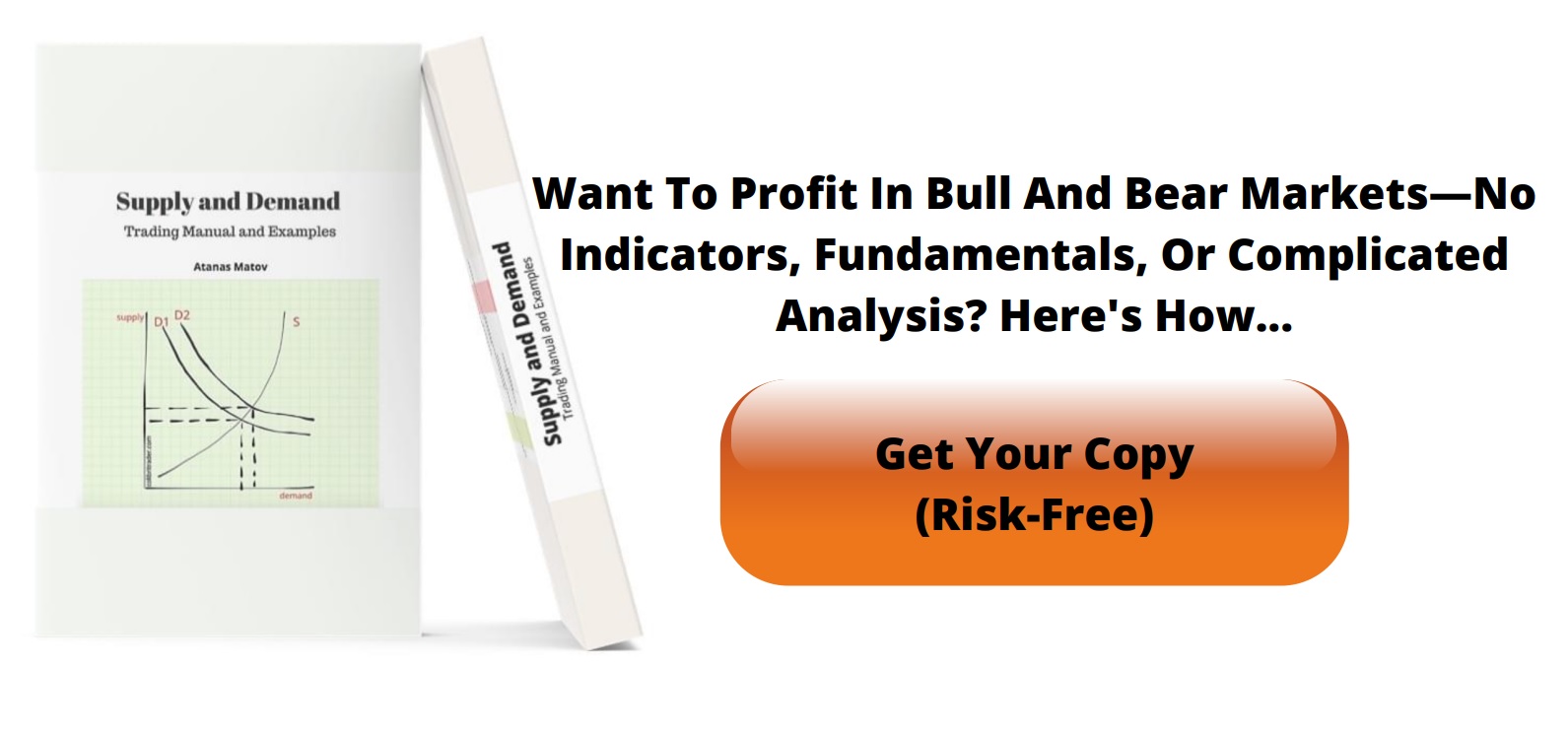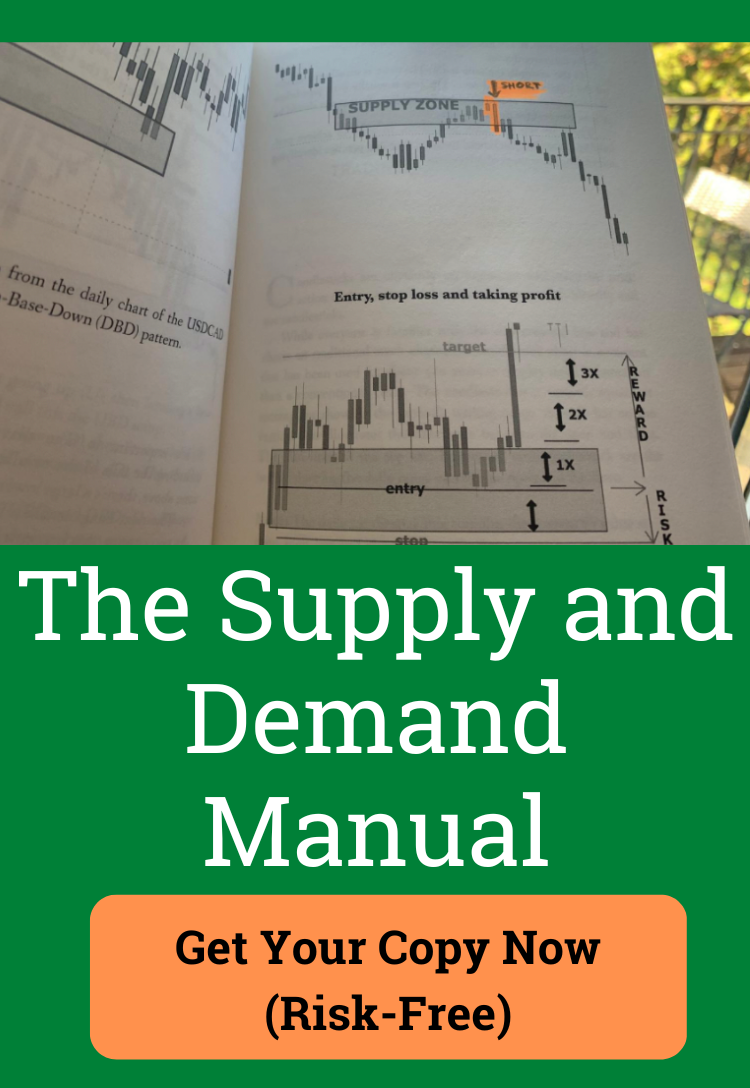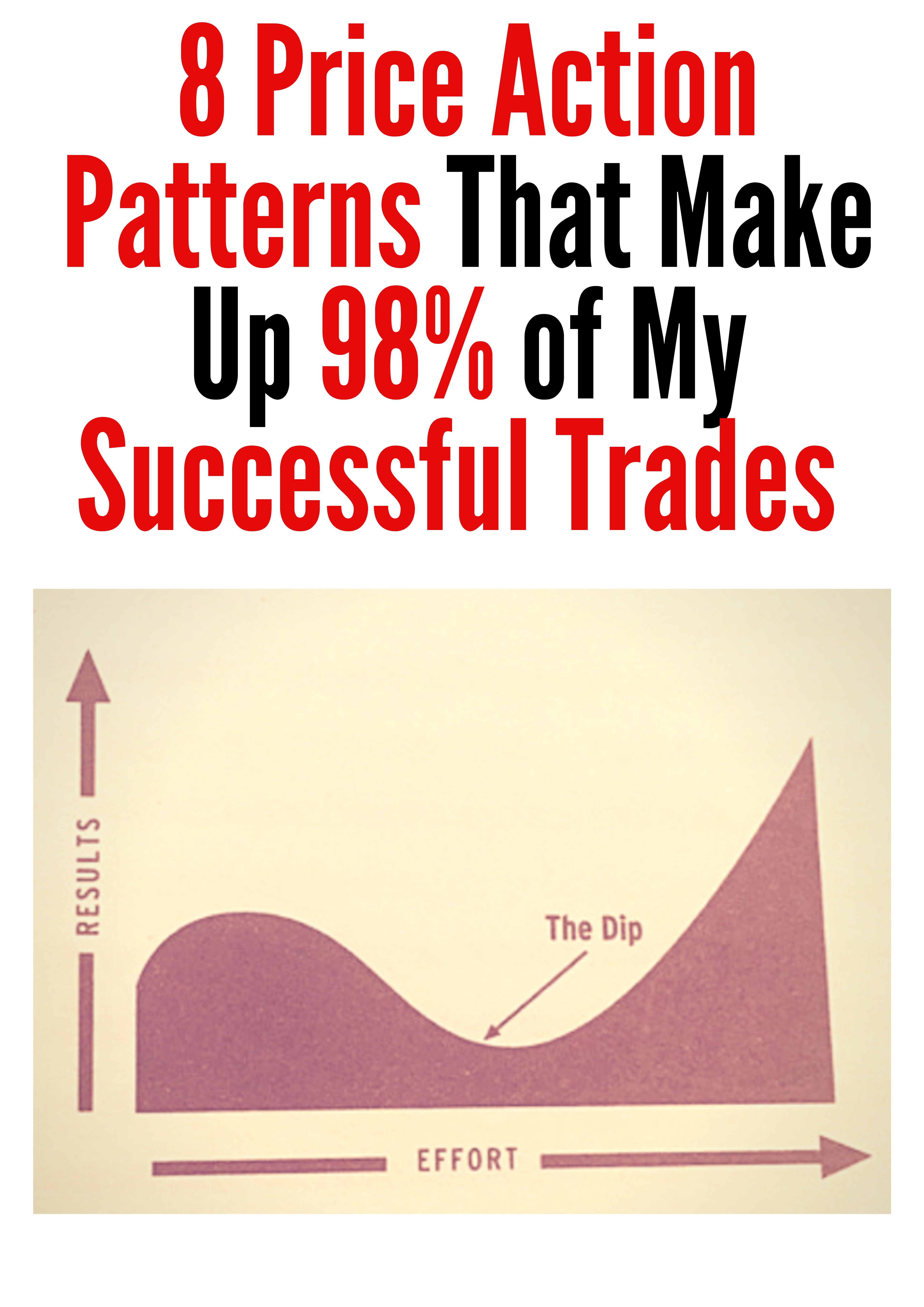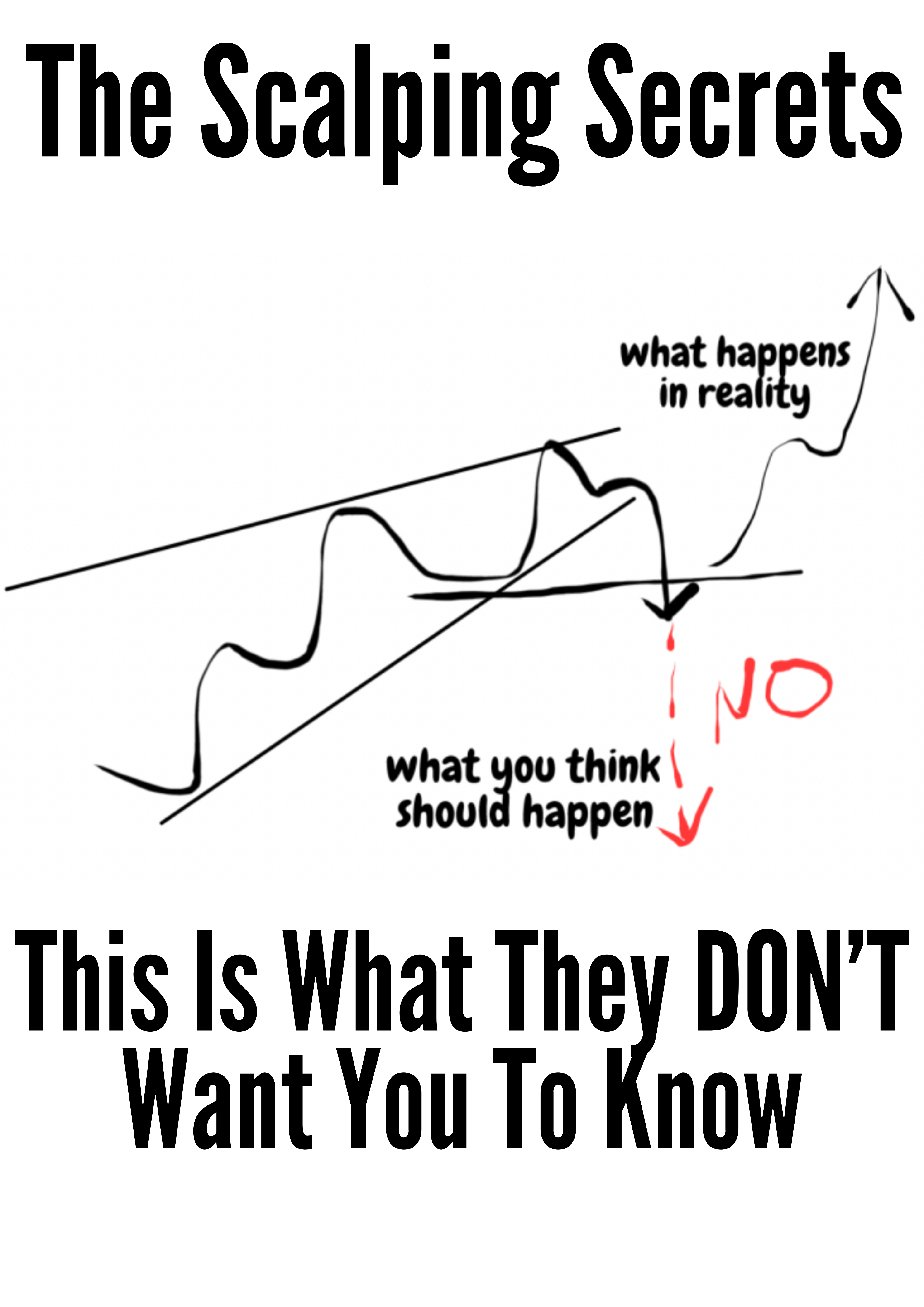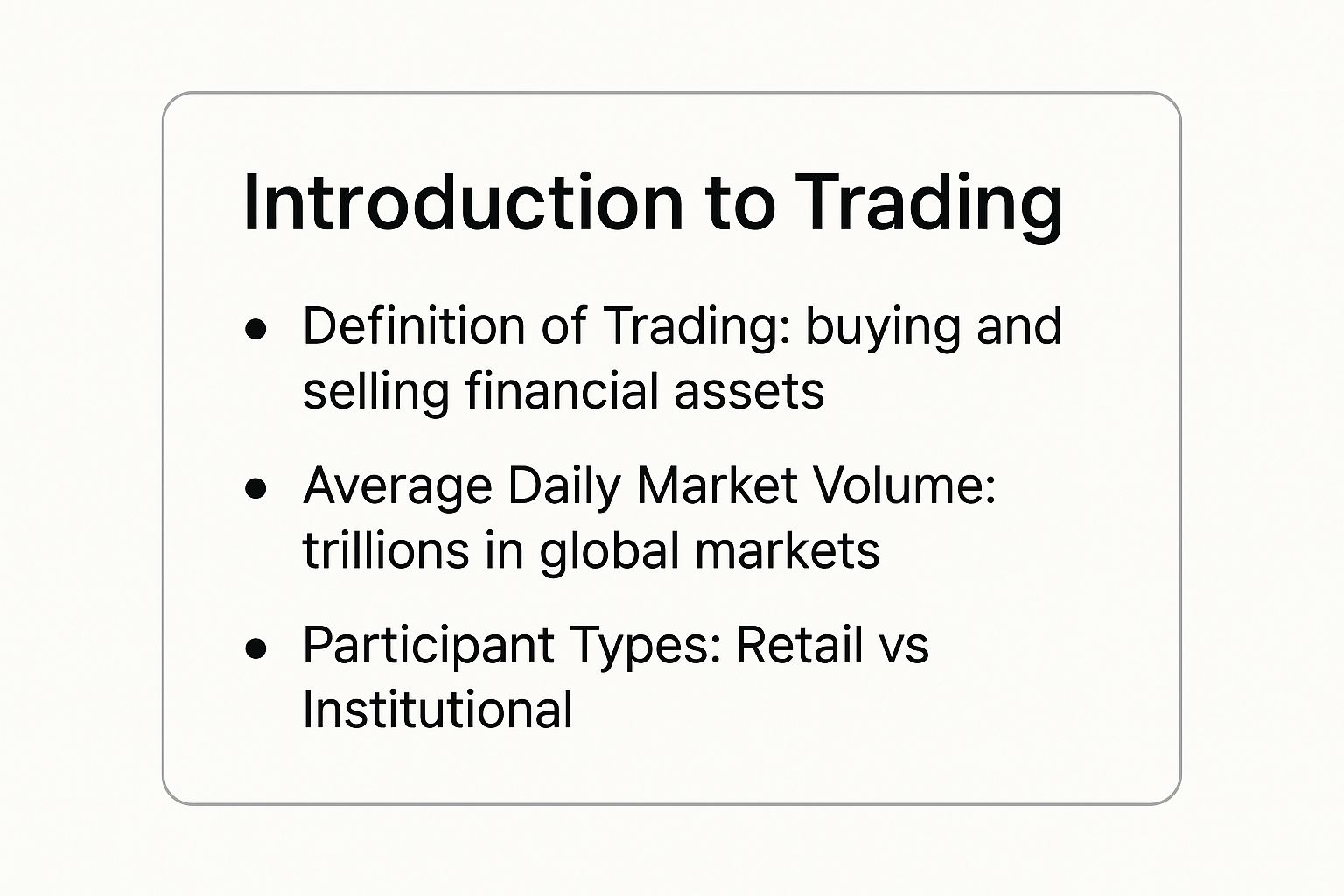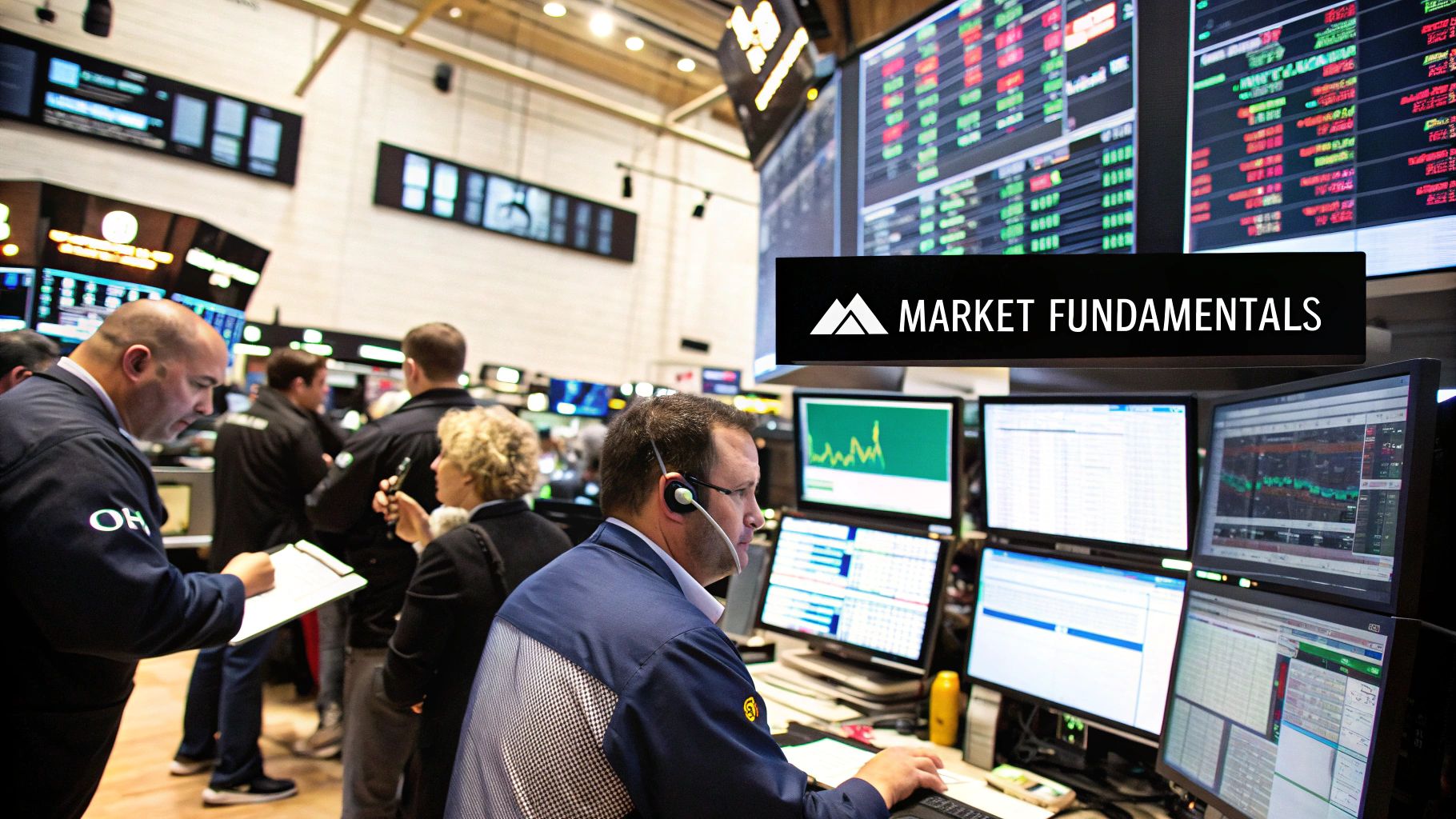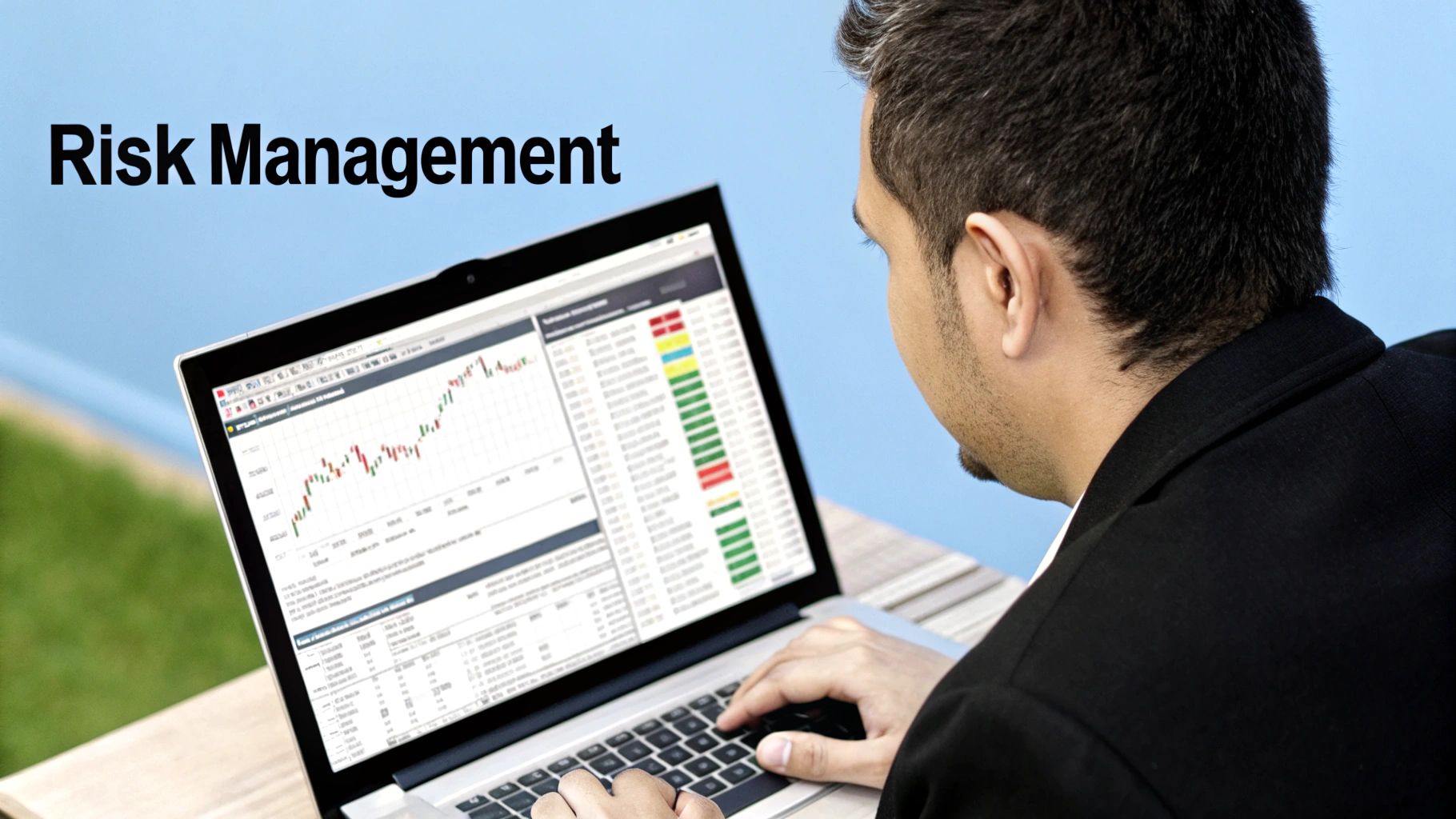Your Guide to the Best Trading for Beginners Book
Choosing the right trading for beginners book is like picking your first toolbox as a novice craftsman: the quality of your tools shapes everything you build from here on. If the book you start with skims over risk management and trading psychology, you’ll learn how to swing the hammer but not how to avoid hitting your thumb. In contrast, a well-crafted guide treats protecting your capital as the first priority—profits come later.
What To Look For In A Great Trading Book
Before you dive into chart patterns or technical indicators, a stellar trading manual breaks down complex ideas—like price action—into real-world stories you can relate to, not dusty academic jargon.
Here’s a quick list of features you’ll want to see:
- Explanations of price action using everyday analogies
- Step-by-step exercises that build skills gradually
- Real-world case studies from retail and institutional traders
- Exercises in risk management and decision-making under pressure
- Insights into trading psychology, not just trade setups
Essential Qualities of a Top Beginner Trading Book
Use this checklist to evaluate any trading book and ensure it provides the foundational knowledge you need to start your journey.
| Essential Feature | Why It Matters for Beginners |
|---|---|
| Clear Explanation of Price Action | Transforms charts into a story you can follow easily |
| Emphasis on Risk Management | Shields your capital when the market doesn’t cooperate |
| Focus on Trading Psychology | Helps you master emotions that can derail your strategy |
| Practical Examples and Case Studies | Shows you how theory plays out in real trades |
| Progressive Learning Path | Builds confidence step by step, not in one giant leap |
Refer back to this table whenever you’re sizing up a new book—it’s like a pre-flight checklist before take-off.
Core Principles Of A Quality Book
A standout trading book zeroes in on ideas that never go out of style, steering clear of fleeting buzz or get-rich-quick schemes. Two pillars stand out:
• Risk Management: More than half of new traders blow out their accounts because they never learned to size up a trade or place a sensible stop.
• Psychological Discipline: Emotions are the silent killers of good strategies. A robust guide shows you how to stay level-headed, even when the market throws a curveball.
This focus isn’t optional. Approximately 70–80% of retail day traders lose money annually—a sobering reminder that having a game plan and the right mindset is non-negotiable.
A beginner’s book should act like a trading mentor: it builds your mental framework, teaches you to question every move, and sets you up to think independently—not just follow a template.
Ultimately, the best resources give you tools and a way to sharpen them. For a curated list of titles that check every box, visit https://www.colibritrader.com/trading-books-for-beginners/.
Understanding Price Action: The Language of the Market
If you're just starting out, forget trying to memorise dozens of complicated indicators. Seriously. The most powerful skill you can learn is how to read price action—it’s the market’s natural language.
Think of it like learning to read music. Instead of notes on a page, you have candles on a chart.
Each candle is a "word," and the patterns they form are the "sentences." Together, they tell you the real-time story of supply and demand, showing the raw psychological battle between buyers and sellers. Any trading for beginners book worth its salt will spend a lot of time on this. It's that important.
Decoding the Charts
Learning price action lets you make decisions based on what the market is doing right now. You're not relying on confusing, lagging indicators that only tell you where the market has been. It's all about reading the raw movement of price to get a feel for where it might go next.
The core ideas are actually pretty simple, but incredibly powerful:
- Support Levels: Think of these as price floors. It's an area where buyers tend to step in and overpower the sellers, causing the price to bounce back up.
- Resistance Levels: These are the opposite—price ceilings. Here, sellers are strong enough to stop a price from climbing higher, often pushing it back down.
- Trends: Is the market moving up (higher highs and higher lows) or down (lower highs and lower lows)? Price action makes the trend obvious.
A price chart is a visual map of human psychology. Every single pattern reflects the collective fear, greed, and indecision of millions of traders. Learning to read it gives you a massive edge.
When you focus on these basics, your analysis becomes much cleaner. You start to spot trends as they form, identify simple but powerful candlestick signals like pin bars or engulfing patterns, and see logical places to get in or out of a trade. This is the bedrock of any solid trading strategy, turning what looks like a messy chart into a clear roadmap.
Avoiding the Common Pitfalls of New Traders
A lot of new traders get wiped out, but it's rarely because their strategy was totally wrong. The real killer? Predictable psychological traps. Getting a handle on these emotional hurdles is your first real step toward building the mental toughness you need to actually last in this game.
Any decent trading for beginners book will spend a lot of time on this, and for good reason. Mastering your own mind is way harder than mastering a chart. That rush from a winning trade? It can quickly turn into overconfidence. A single loss can send you spiraling into a nasty cycle of emotional decisions.
Navigating Destructive Trading Habits
The path to consistent profits is littered with the same old mistakes that drain accounts and shatter confidence. If you can learn to spot them, you're halfway there.
These three emotional reactions are especially toxic:
- Overtrading: After a few wins, it's easy to feel like you can't lose. Suddenly, you see "perfect setups" everywhere. This is a classic trap that leads you to take low-quality trades that don't fit your plan, giving back your profits just as fast as you made them.
- Revenge Trading: This one is a pure gut reaction. You take a loss and immediately jump back in to "win your money back." These trades are impulsive, have zero planning, and almost always end up digging a deeper hole.
- Fear of Missing Out (FOMO): There's nothing quite like the pain of watching a stock rocket higher without you. FOMO is what pushes traders to chase those moves, buying high out of sheer panic. You end up being the "dumb money" buying at the top, right before the smart money starts to sell.
Trading is a business, not a slot machine. The market doesn't owe you a thing. Your success comes down to one thing: executing a well-defined plan with ice-cold discipline, no matter what your emotions are screaming at you.
To fight these impulses, you have to start treating your trading like a serious enterprise. That means building a detailed trading plan with iron-clad rules for your entries, exits, and especially your risk management. Think of your plan as a shield against your own worst instincts.
By defining your maximum risk on every single trade before you click the button, you take the emotion out of the equation. This simple act of discipline prevents one bad decision from wiping out a week's worth of hard work. It's this business-like approach that separates profitable traders from the 90% who ultimately fail. This isn't optional; it's your foundation for survival.
Choosing Your Approach: Trading vs. Investing
Are you a trader or an investor? It's a fundamental question.
Newcomers to the markets often use these terms interchangeably, but that's a classic rookie mistake. They are two completely different paths, and confusing them is like trying to win a marathon by sprinting the first mile. You'll burn out fast and get nowhere.
The easiest way to get it straight is with an analogy. Trading is like flipping houses. The goal is to get in, hold for a short period—from a few minutes to maybe a few months—and get out with a quick profit.
On the other hand, investing is like buying a rental property. You're in it for the long haul, planning to hold for years, collecting rent (dividends), and letting the property appreciate over time.
What Is Your Time Horizon?
Which path is right for you? It really boils down to your goals, how you handle risk, and how much time you can realistically spend staring at charts.
Trading is an active game. It demands your daily attention and requires you to be comfortable with higher risk and making quick decisions based on price action. If this sounds like your speed, our guide on how to start trading for beginners offers a solid starting point for this hands-on approach.
Investing, however, is a much more passive, long-term strategy. It's about looking at a company's fundamental value and its potential to grow over many years. This requires patience and the steel discipline to ride out market storms without hitting the panic button.
Understanding this distinction is the absolute first step. You have to align your strategy with your personal financial goals. Applying a trader's mindset to a long-term investment portfolio—or vice-versa—is a recipe for failure.
Some resources are built specifically for that long-term view. A great example is Burton Malkiel's classic, 'A Random Walk Down Wall Street.' It lays out a framework for building wealth steadily over decades, completely at odds with the short-term tactics you'd find in a typical trading book.
Applying Your Knowledge with Free Resources
A good trading for beginners book hands you the blueprint. But let's be honest, real skill is forged in the markets, not on the page.
Reading about price action is one thing. Spotting it on a live chart, with your heart pounding as the candles form in real-time? That’s a whole different ball game. The mission now is to shift from just learning to actually doing.
This jump from theory to practice is exactly where so many new traders stumble. But here's the good news: you don't need to spend another penny to bridge that gap. There are some fantastic free resources out there to help cement what you've just learned.
From Reading to Doing
The only way forward is to start using tools that let you apply your new knowledge without risking a single dollar. Think of it as your trading apprenticeship. This is how you turn what you've read into a skill you can actually count on.
Here are a few practical ways to get your hands dirty:
- Practice with a Demo Account: This is non-negotiable. Seriously. A demo account lets you trade with virtual money in the live market. It’s the perfect sandbox to test your strategies and make all the inevitable rookie mistakes without any financial pain.
- Analyze Historical Charts: Scroll back in time on any chart. Start applying the price action principles you've learned. Can you spot the support and resistance levels? The trend patterns? The candlestick formations? This is how you train your eyes to recognize setups instantly.
- Follow Reputable Trading Blogs: Many seasoned traders, myself included here at Colibri Trader, share free articles and breakdowns of recent market action. It’s a great way to see how a professional thinks through a trade.
The real test isn’t what you can recite from a book. It’s how you react when the market moves against you. Practicing in a risk-free space builds the muscle memory you’ll need when real money is on the line.
Even the most classic trading books, like 'A Beginner’s Guide to Day Trading Online' by Toni Turner, are meant to be launchpads. Turner’s work is brilliant at connecting basic ideas to real-world tactics, and now you can do the same with free tools. If you're curious about other classic trading books, you can learn more on SpartanTrading.com.
Frequently Asked Questions About Learning to Trade
After you finish a trading for beginners book, it's totally normal for a wave of questions to hit you. This is the point where theory smacks into reality, and getting some straight answers can make all the difference in what you do next. Let's dig into some of the most common things that new traders ask.
How Long Does It Take to Learn Trading From a Book
You can probably read a book in a week. But actually mastering what's inside? That's a whole different ballgame. Think of the book as your theory manual, the starting point.
Getting a real feel for price action, risk management, and the mental game of trading takes months of consistent practice. Don't worry about speed. Focus on deep understanding and building that muscle memory. The best way to do that is to take what you've learned and apply it relentlessly in a demo account until it becomes second nature.
Can I Really Learn to Trade for Free
Absolutely. You can build a surprisingly strong foundation in trading without spending a dime. A lot of great traders and brokers put out high-quality blogs, videos, and free e-books that are just as good, if not better, than some paid courses.
The trick is finding a structured path to follow. Start with the big stuff: price action and managing your money. A solid free guide paired with disciplined practice on a demo account can be an incredibly powerful combination.
The market is a mental battlefield more than a financial one. Winning requires mastering your internal state before you can master your strategy. Understanding this is the first step toward lasting success.
Learning to control your own thoughts and emotions is non-negotiable. For some practical tips on this, check out our guide on the seven essential tips for mastering trading psychology. It'll help you get that mental edge.
What Is the Most Important Topic for Beginners
Strategies are fun to talk about, but the single most important topic for any new trader is risk management. Period. You could have the best strategy in the world, but if you don't know how to protect your capital, you're toast.
Any decent beginner's book has to hammer these points home. They are not optional.
- Setting Stop-Losses: This is your eject button. It defines the absolute maximum you're willing to lose before you even enter a trade. It’s what stops one bad decision from blowing up your account.
- Proper Position Sizing: This is all about making sure no single trade can hurt you too badly. It allows you to survive the inevitable losing streaks that every trader faces.
- Calculating Risk-to-Reward Ratios: This simple calculation helps you decide if a trade is even worth the risk. It forces you to compare how much you stand to win against how much you're putting on the line.
Mastering risk management is what keeps you in the game long enough to figure things out. It's the skill that separates traders who last from those who don't.
Ready to move beyond theory and start building practical skills? At Colibri Trader, we cut through the noise with a straightforward, price-action-based approach. Get instant access to the first two chapters of our Amazon bestselling book and see how our methods can help you profit without relying on confusing indicators. Start your journey with us today.

